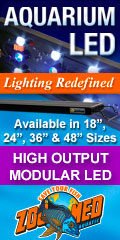I know the question about glass thickness has been asked a billion times, but after reading through those discussions, I still can't figure out what to choose. The more I delve into the topic, the more difficult my decision becomes.
The construction of my plywood tank has just finished the sealing process, and I'm ready to install the front glass. The dimensions are 240 x 130 x 105 cm (95" x 50" x 41" in length, width, and height) with a capacity of approximately 3000 liters or 800 gallons. I've researched different types of glass, and here are my conclusions and considerations for the most relevant options:
OPTION 1:
25mm or 1" Float glass single sheet low iron (for reduced greenish tint)
Pros:
12mm or 3/4" tempered low iron glass
Pros:
2 x 12mm or 3/4" tempered low iron glass, laminated with PVB foil (Standard glass lamination foil)
Pros:
Option 1 is my preferred choice, but I can't find such thick glass in Denmark.
Option 2 seems successful for many DIY enthusiasts. Though the risk of sudden glass malfunction is minimal, seeking professional advice is prudent. The risk persists even with careful installation (no stress to any glass edge, wide and even silicone gasket, stiff frame, etc.).
Option 3 appears to be the safest choice. I need to figure out how to seal the glass edge to prevent water from reaching the lamination foil. I've consulted professional aquarium constructors who favor this solution for public aquariums.
I'm a little concerned about the risk of visual distortion like the common roller-wave distortion. Will it be noticeable?
Have any of you who have done DIY projects with tempered or laminated glass experienced visual distortion?
Does anyone know how to ensure the tempering process is done correctly to minimize excessive tension buildup and reduce distortion?
Maybe I'm overthinking this, but I want to get it right.
Thanks in advance for your comments and advice.
Best regards, Jon
The construction of my plywood tank has just finished the sealing process, and I'm ready to install the front glass. The dimensions are 240 x 130 x 105 cm (95" x 50" x 41" in length, width, and height) with a capacity of approximately 3000 liters or 800 gallons. I've researched different types of glass, and here are my conclusions and considerations for the most relevant options:
OPTION 1:
25mm or 1" Float glass single sheet low iron (for reduced greenish tint)
Pros:
- Used for standard glass aquariums for decades.
- Very good transparency.
- Low or zero distortion artifacts.
- No risk of delamination (edge of glass can be exposed to water with no risk).
- Easy to bond/seal with standard silicone or MS-polymer.
- "Just" normal glass strength means increased thickness and weight. For my required size, it's around 140kg.
- Impossible to source in Denmark. The thickest glass I can find is only 19mm.
12mm or 3/4" tempered low iron glass
Pros:
- Higher strength (5 times compared to standard float) = reduced mass.
- Reduced price.
- Easily available in several online glass shops.
- Likely more scratch-resistant compared to float.
- No risk of delamination (edge of glass can be exposed to water with no risk).
- Easy to bond/seal with standard silicone or MS-polymer.
- Internal tensions can build up during the hardening process, leading to rare instances of "exploding" glass.
- Visual distortion is not uncommon, particularly visible when looking through the glass from the side (commonly known as "roller-wave").
- The glass can warp slightly due to the tempering process, but this might be negligible.
2 x 12mm or 3/4" tempered low iron glass, laminated with PVB foil (Standard glass lamination foil)
Pros:
- Very high strength.
- Widely available in most glass shops.
- If one glass breaks, the other should be strong enough to contain the water.
- Easy to bond/seal with standard silicone or MS-polymer.
- Commonly used in public aquariums (in Denmark), often with more than 2 sheets of laminated tempered glass.
- Heavy, similar weight to a solution with normal float glass.
- Risk of delamination. The lamination foil along the glass edge must be protected from water and not exposed to standard silicone.
- Higher risk of visual distortion compared to a single sheet of tempered glass.
Option 1 is my preferred choice, but I can't find such thick glass in Denmark.
Option 2 seems successful for many DIY enthusiasts. Though the risk of sudden glass malfunction is minimal, seeking professional advice is prudent. The risk persists even with careful installation (no stress to any glass edge, wide and even silicone gasket, stiff frame, etc.).
Option 3 appears to be the safest choice. I need to figure out how to seal the glass edge to prevent water from reaching the lamination foil. I've consulted professional aquarium constructors who favor this solution for public aquariums.
I'm a little concerned about the risk of visual distortion like the common roller-wave distortion. Will it be noticeable?
Have any of you who have done DIY projects with tempered or laminated glass experienced visual distortion?
Does anyone know how to ensure the tempering process is done correctly to minimize excessive tension buildup and reduce distortion?
Maybe I'm overthinking this, but I want to get it right.
Thanks in advance for your comments and advice.
Best regards, Jon






